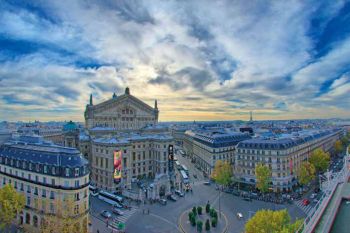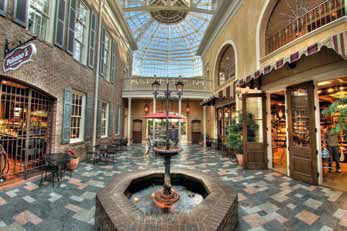articles/Digital/mergingtohdr-page3
Merging to HDR - High Dynamic Range - part 3 of 1 2 3 4 5
Published 01/02/2011

It depends how the image looks. It often creates more natural looking skies. It's also great if you want to go in a different creative direction. You can get a great variety of different colour effects. My 'Train to Surreal' image was created in this program.
But sometimes I see odd artefacts introduced into images; burnt skies or excessive noise. So I don't recommend this program as your only HDR-specific software. It is good to give you different creative ways to go. Cost is around £40.
HDR Efex Pro (PC/Mac compatible)
Like all Nik software, HDR Efex Pro's user interface is intuitive and easy to understand. I liked the variety of one-click presets, and it is easy to keep your HDR looking natural. I still prefer the colour in Photomatix for outdoor HDR though.
Nik's patented 'U Point Technology' is included. With this you can finetune very specific areas in your image without effecting the rest of it.
But HDR Efex Pro does not offer batch processing and it is significantly more expensive than the other HDR software reviewed, at around £100.
Oloneo (Free Beta - PC only)
Oloneo surprised me with its good layout and ease of use. It is particularly good with interior HDR and gives many ways to alter the colour temperature to help control any colour casts.
Batch rename the winning sets in Photoshop or Lightroom with a number sequence. If I have 20 sets of five bracketed images, it will be numbered 1 through 100.

I then use Photomatix to batch my 20 sets of five into 20 single, 32-bit images. While Photomatix is doing this, I'm in Photoshop or doing something else.
When Photomatix finishes its batching, I go in and open the 32-bit images in Photomatix for tone-mapping. The tone-mapping is very fast. Once I set up the sliders for the first image, I usually stay pretty close to those settings for the other images. I then finish the image in Photoshop.
Avoiding HDR Issues
Halos can be an issue with HDR images. Halos are usually found where the sky meets buildings or trees in an image. It is a line, or band, of lighter sky. It does not look natural and is very distracting.
You usually get it if using extreme settings in your tone mapping, although sometimes you may still see halos even with conservative settings. In that case you may have to swap out the sky in your HDR image with the original sky in one of the bracketed images in Photoshop.
Over-saturation is easily controlled in all the programs I reviewed here. Once you have the settings the way you like them, you can save them as one of your custom presets.
You have complete control over your image. It is easy to stay within a regular colour range, but still gain a significant advantage by using HDR. You have to watch you do not overdo it, particularly with skies.
Please Note:
There is more than one page for this Article.
You are currently on page 3
- Merging to HDR - High Dynamic Range page 1
- Merging to HDR - High Dynamic Range page 2
- Merging to HDR - High Dynamic Range page 3
- Merging to HDR - High Dynamic Range page 4
- Merging to HDR - High Dynamic Range page 5
1st Published 01/02/2011
last update 09/12/2022 14:56:41
More Digital Articles
There are 36 days to get ready for The Society of Photographers Convention and Trade Show at The Novotel London West, Hammersmith ...
which starts on Wednesday 14th January 2026





